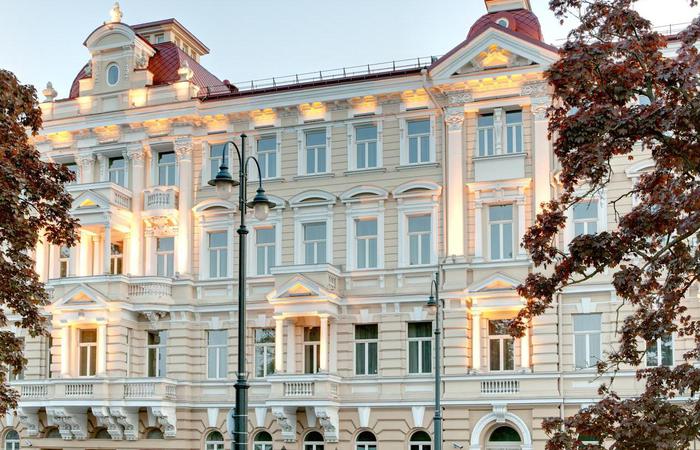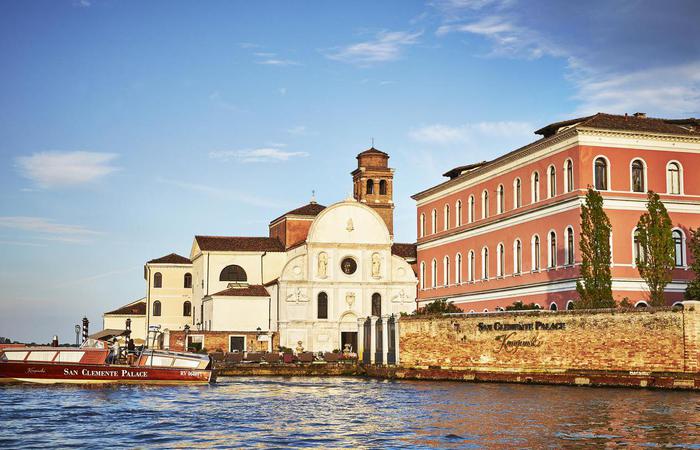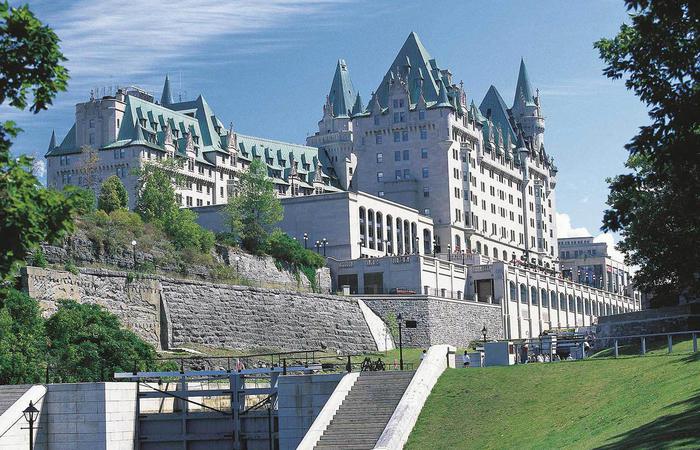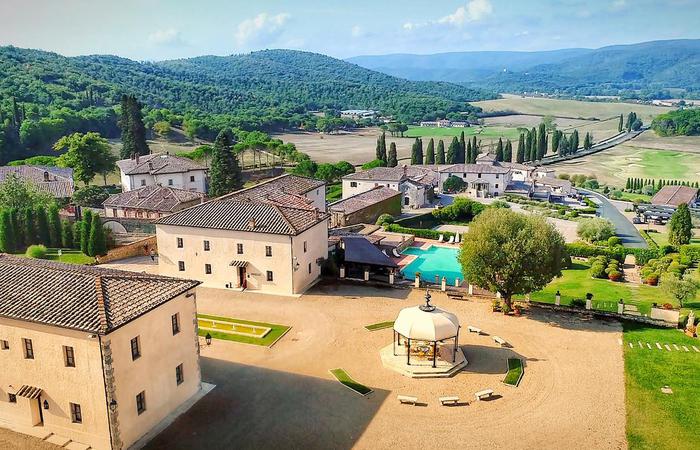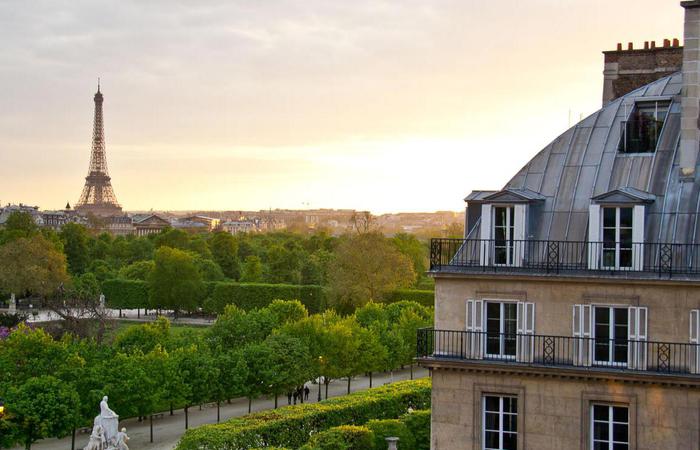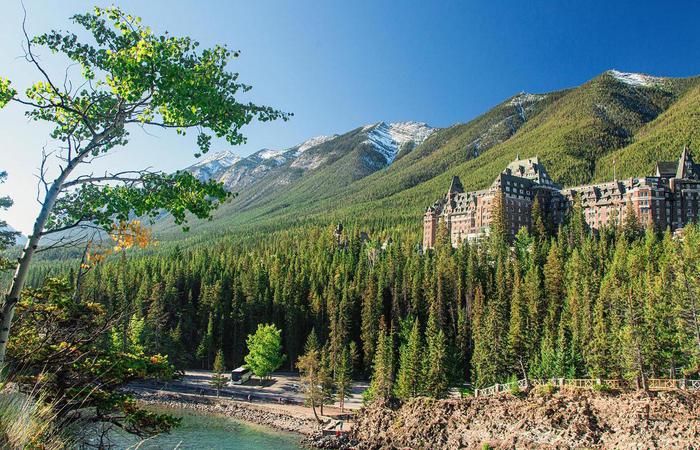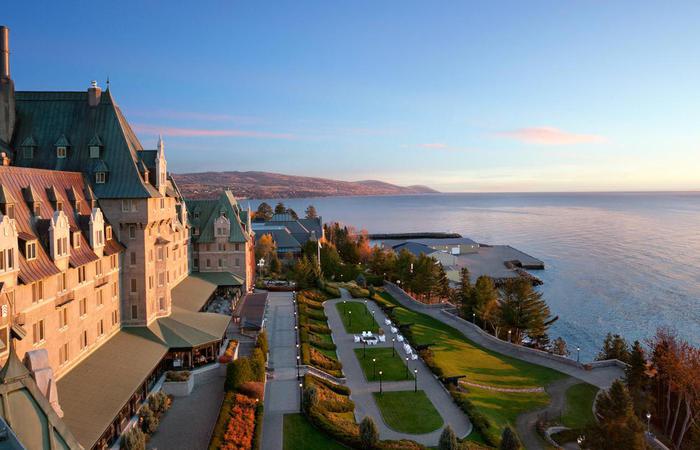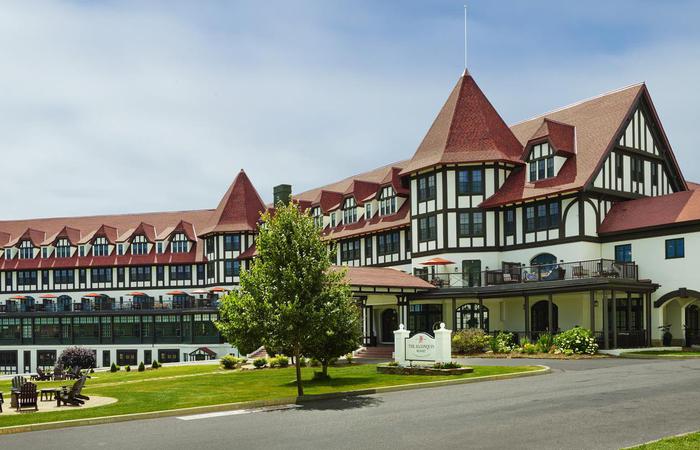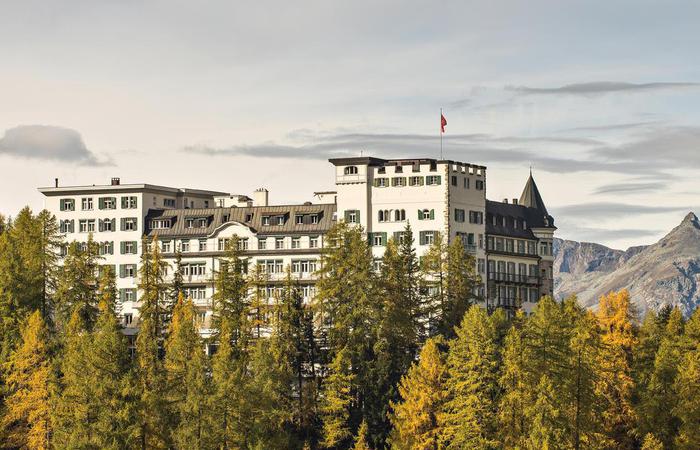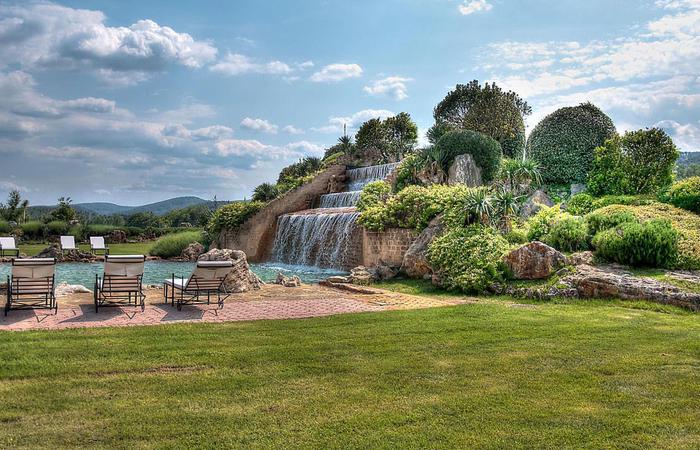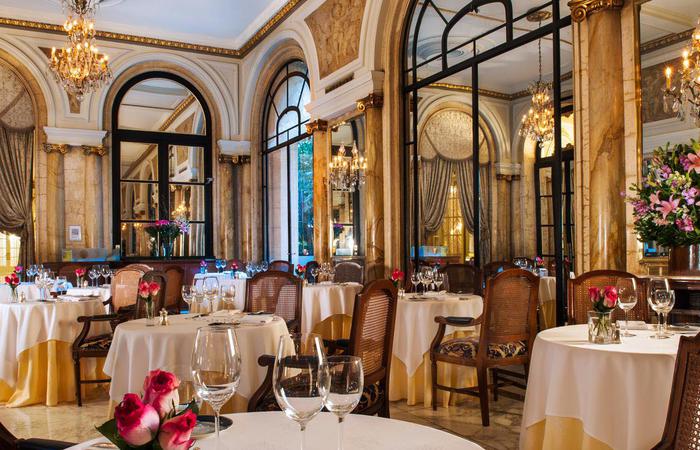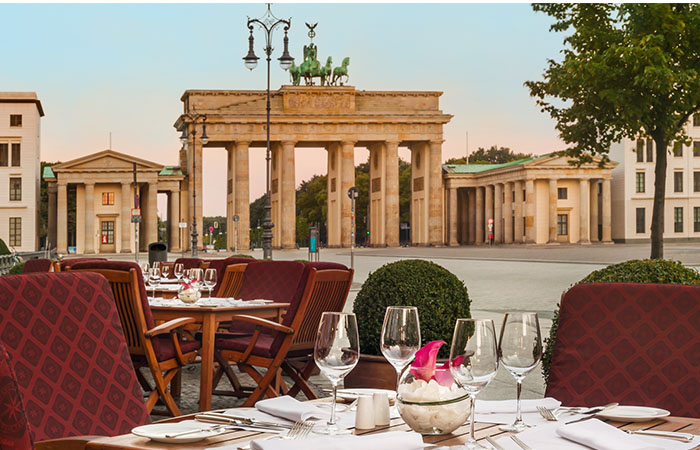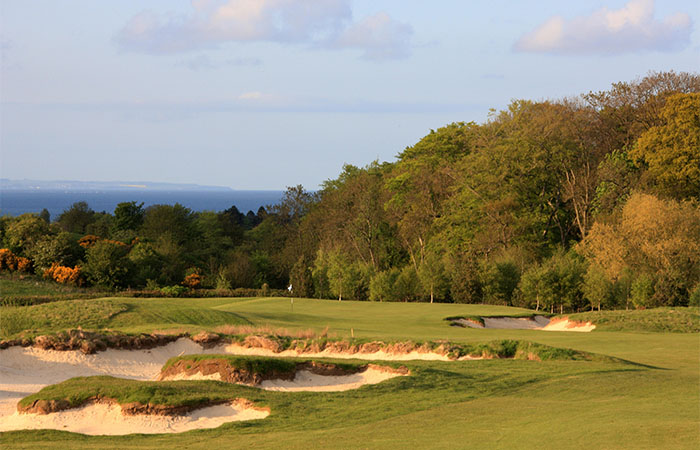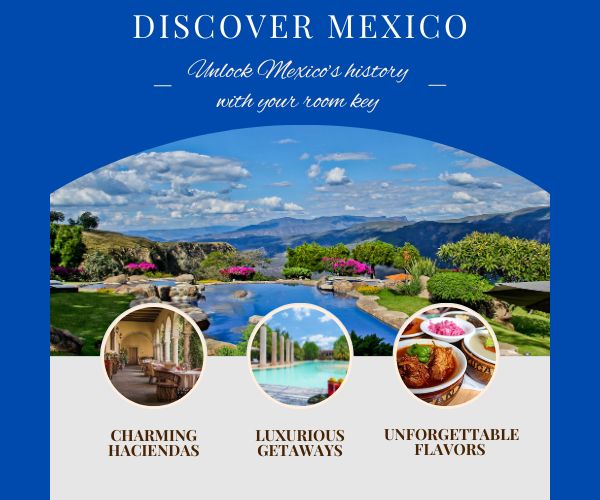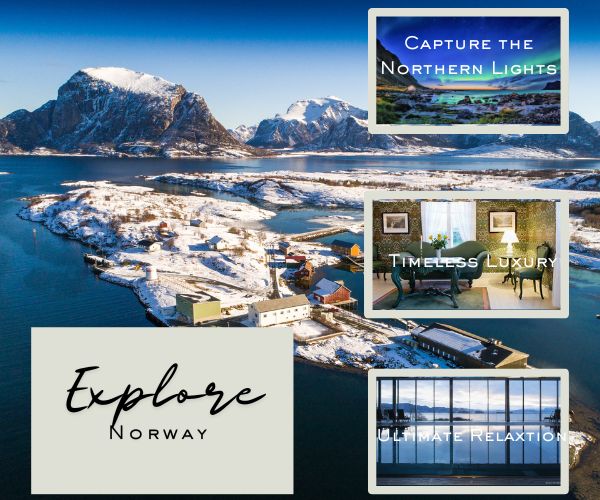Receive for Free - Discover & Explore eNewsletter monthly with advance notice of special offers, packages, and insider savings from 10% - 30% off Best Available Rates at selected hotels.
history
Discover El Fuerte Marbella, which has been among the most prestigious destinations along the picturesque Costa del Sol for more than half a century.
El Fuerte Marbella, a member of Historic Hotels Worldwide since 2025, dates back to 1954.
VIEW TIMELINE
History of El Fuerte Marbella
Learn more about the fascinating history of El Fuerte Marbella, one of the most exclusive retreats in Spain’s picturesque Costa del Sol. WATCH NOWOverlooking the sun-drenched shores of the Costa del Sol, El Fuerte Marbella is a holiday destination that epitomizes the absolute best of the Spanish hospitality industry. Its story harkens back much further to an imposing fort that has given the hotel its name.The origins of El Fuerte Marbella began in 1554, when Emperor Charles V of Spain ordered the construction of a mighty coastal citadel—El Fuerte de San Luis—to defend the town of Marbella from Barbary pirates. The fort was designed in the “abaluartado” style, a type of bastion common in the 16th century that featured thick walls and angular parapets meant to deflect artillery fire. Furthermore, the imposing castle contained a battery of six cannons, while its vaulted rooms served as both barracks and storage for munitions. Strategically positioned along the Mediterranean, the fort thus came to symbolize the great strength of the Spanish Habsburg dynasty for generations. El Fuerte de San Luis even managed to maintain its incredible military importance long after the Habsburgs vacated the throne, eventually capitulating to the French amid their occupation of Spain during the titanic Napoleonic Wars. However, the fort gradually fell into disrepair in the years that followed, with a majority of the complex collapsing to ruins by the beginning of the 20th century. Most of the area was thus largely uninhabited when the prosperous businessman José Luque Manzano stumbled upon it decades later in 1954.
Forced to leave school as a young teenager to help run his father’s various enterprises, José had consistently demonstrated a natural acumen for entrepreneurship throughout his life. (For instance, his earlier ventures included managing a chocolate factory that produced the popular “El Carmelo” candy bars.) Amid his ascent within Spain’s national business community, José purchased the land of the erstwhile El Fuerte de San Luis, including a quaint manor that previous owners had built at the site. Although the region was only then known for its fishing hamlets, José saw incredible potential. He envisioned constructing a luxurious hotel right where the residence stood, hoping that its adjacent waterfront would serve as the perfect place to rest and relax. Work on José’s exciting new resort began shortly thereafter, taking a full three years to finish from the ground up. On July 4, 1957, El Fuerte Marbella was finally ready to welcome guests, with José organizing a seaside agape feast to commemorate the occasion. From the outset, the hotel distinguished with its impressive blend of comfort, elegance, and personalized service. In fact, many illustrious international figures soon began visiting El Fuerte Marbella frequently, with Walt Disney arriving mere weeks after the location opened. The hotel hosted Spanish film icon Lola Flores, who grew to become a venerable patron of the business. Then in 1960, British actress Diana Dors—often dubbed as the “British Marilyn Monroe”—appeared in scenes for the movie Scent of Mystery, which was shot on the hotel’s exclusive stretch of beach.
El Fuerte Marbella’s popularity flourished as the century progressed, with José Luque Manzano and his family diligently supervising its operations. In the wake of José’s death in 1984 though, his descendants successfully took over management of the hotel. Their shared commitment to quality and sustainability became a hallmark of their company, the Fuerte Group, which would see several more hotels open across Andalusia. Yet El Fuerte Marbella served as the flagship site, with the Luque family continuing to be its dedicated stewards. The Luque family has since remained the caretakers of this wonderful seaside hotel, having recently finished a comprehensive renovation that transformed El Fuerte Marbella into a stunning five-star location. Undertaken in 2022, the project redesigned the building’s layout to feature state-of-the-art amenities, refurbished architecture, and a refined aesthetic that blended modern luxury with local tradition. The renovation proved to be all-encompassing, installing an array of breathtaking enhancements inside the guestrooms, dining spaces, and wellness centers. El Fuerte Marbella stands today as a living landmark—a bridge between Marbella’s past and its cosmopolitan present. The structure is more than just a hotel; it is a cultural institution, a family legacy, and a beacon of Andalusian elegance. This fantastic historic site continues to welcome guests from around the world, offering them not just a place to stay but belong.
-
About the Location +
Located along the famous Costa del Sol in southern Spain, Marbella is an incredible community steeped in history. Some evidence has suggested that the earliest known inhabitants were possibly the Phoenicians, who were known to establish small trading outposts along the Iberian coast throughout much of antiquity. Other historians believe that the discovery of Carthaginian pottery nearby indicated that Marbella was once within the realm of its sprawling Mediterranean empire, too. Regardless of its exact origins, historical records are certain that Marbella had become a Roman town called “Salduba” amid Rome’s conquest of the Iberian Peninsula in the 2nd century B.C. Traces of Roman influence can be seen throughout modern Marbella today, such as the three beautiful Ionic capitals that still exist within a ring of historical fortifications. Nevertheless, Marbella’s time as a Roman town eventually ended when the Roman Empire collapsed throughout the 5th century A.D. In the power vacuum that followed, the Visigoths briefly controlled the area until the Umayyad Caliphate crossed the ocean from North Africa and seized the territory in the 8th century. The city subsequently became integrated into a growing Islamic civilization referred to as “Al-Andalus” by its new Muslim residents. The Umayyads and their descendants then began transforming the community’s appearance, constructing a series of unique townhouses and commercial structures that featured a stunning array of Middle Eastern design aesthetics. Perhaps the greatest building project the Muslims oversaw was the creation of an imposing walled citadel that prevented attacks from both land and sea. Marbella even assumed its current name then, with the very first iteration spelled as “Marbal-la.”
In 1485, the Catholic Monarchs of Spain—Queen Isabella I of Castile and Fernando II of Aragon—peacefully obtained the settlement in one of the last phases of the Reconquista. Now part of Spain, Marbella assumed the position of an important provincial capital that dominated the politics of the region for generations. Its economy remained firmly rooted in agriculture for centuries thereafter, especially once sugarcane became the primary crop grown at the numerous farms populating the surrounding countryside. But Marbella began to experience yet another period of significant change when industrialization began to arrive in the 19th century. In 1828, one of the first modern industries to initially appear in Marbella was mining, with businessman Manuel Agustín Heredia founding an iron-ore smelting company called “La Concepción” downtown. While his blast furnaces were only active for three decades, their presence presaged the construction of many more factories throughout the late Victorian era. Then in the 20th century, Marbella’s manufacturing sector was joined by another lucrative trade—tourism. Following the aftermath of World War II, the beaches near Marbella rapidly became popular vacation destinations due to their fantastic weather and turquoise water. Recognizing the economic potential, a European aristocrat named Prince Alfonso of Hohenlohe-Langenburg started developing upscale resorts in Marbella and the rest of the Costa del Sol. His investment transformed the region into an incredibly attractive seasonal retreat for travelers throughout the world. Marbella has since retained its illustrious identity as a premier holiday destination, particularly among cultural heritage travelers eager to experience its luxurious character and fascinating heritage.
-
About the Architecture +
When José Luque Manzano first had the El Fuerte Marbella designed back during the 1950s, he requested that the architectural team use Mid-Century Modern aesthetics as their source of inspiration. An offshoot of the earlier International and Bauhaus movements, Mid-Century Modern essentially sought to portray a seemingly contemporary, futuristic aesthetic that reflected the popular concepts of civil progress of the era. Professional architects mainly utilized the style from the 1930s to the 1960s, when Western society was rapidly undergoing huge transformations both social and technological in nature. It seemed to many at the time that the world’s way of life was truly on an upward path of mobility. Western architects thus embraced the design ideals of function, simplicity, and rationality in order to create sleek-looking structures that possessed a communal purpose. Mid-Century Modern designs made explicit use of vertical, flat lines as such, as well as irregular rectangular shapes so to convey a lack of formality. Overt ornamentation was typically abandoned, too, with monochromatic brickwork, steel, and concrete serving as the essential building blocks for the exterior. Inside, most of the rooms were subdivided into split levels, giving a sense that the structure had undergone a significant change in elevation. Modernist buildings featured wide, open spaces filled with natural light that represented practicality and comfort. (Large windows often served as the primary way in which the architects achieved such a feature.) The introduction of spacious windows even sought to better incorporate nature into the overall design, making the surrounding landscape seem as if it were part of the building
But El Fuerte Marbella displays Andalusían-inspired architectural concepts that were first introduced in Spain by Muslims throughout the Middle Ages. Indeed, the architectural legacy that they left behind have been cherished in the country ever since. Successive generations of Spanish people have thus sought to replicate this form of Andalusían architecture within their own building projects, as well as to safeguard any surviving examples. Berber and Arab origin, the Muslims that arrived in Spain had originally settled almost all of the Iberian Peninsula at the dawn of the Early Middle Ages. Establishing small kingdoms, the Muslims subsequently resided in the region for years. But while their civilization was eventually gone by the 15th century, many aspects of their culture endured thereafter. Perhaps one of their greatest legacies was their grand architectural designs. Influenced tremendously by Islamic design principles from the Middle East, the Iberian Muslims created brilliant edifices that embraced the concepts of rhythmic linear patterns, vegetative design, and elaborate geometric shapes. A combination of wood, stucco, and tiling—most notably “zellij”—constituted the building materials, although architects added more resources when attempting to emulate the design much later in modern times. One of the greatest components to this kind of Andalusían building style involved the “horseshoe arch,” which consisted of a perfect curve that bulged outward from the base. Furthermore, the local Muslims had decorated their structures with onion-shaped domes that were generally topped with a pointed spire. Cultural heritage travelers today can witness this historic architectural form throughout much of Spain in places like Alhambra, Granada, and Córdoba.
-
Famous Historic Guests +
Diana Dors, actress known for her roles in such films like Yield to the Night, Deep End, and Tread Softly Stranger.
Lola Flores, singer, actress, and dancer widely celebrated one of the most iconic figures in flamenco and Andalusian folklore.
Audrey Hepburn, actress known for her roles in such films like Breakfast at Tiffany’s, Roman Holiday, and My Fair Lady.
Frank Sinatra, singer and actor part of the famous Rat Pat known for selling 150 million records worldwide.
Elizabeth Taylor, celebrated actress known for her roles in Cleopatra and The Taming of the Shrew.
Richard Burton, actor known for his roles in Cleopatra and Where Eagles Dare.
Sean Connery, actor known for his roles in Goldfinger, The Untouchables, and The Hunt for Red October.
Timothy Dalton, actor best remembered for playing James Bond in The Living Daylights and License to Kill.
Conchita Montes, actress best remembered for her roles in movies like Life on a Thread, El último caballo, and Nada.
Jean Cocteau, artist known for his contributions to the Surrealist and Dadaist artistic movements.
Rafael Alberti, one of Spain’s most influential poets hailed for being a part of the celebrated “Generation of '27.”
Edgar Neville, film director and playwright best remembered for such works like Life on a Thread, The Last Horse, and El crimen de la calle Bordadores.
Walt Disney, legendary cartoonist and founder of the Walt Disney Company.
Adolfo Suárez, Prime Minister of Spain (1976 – 1981)
-
Film, TV and Media Connections +
Scent of Mystery (1960)

